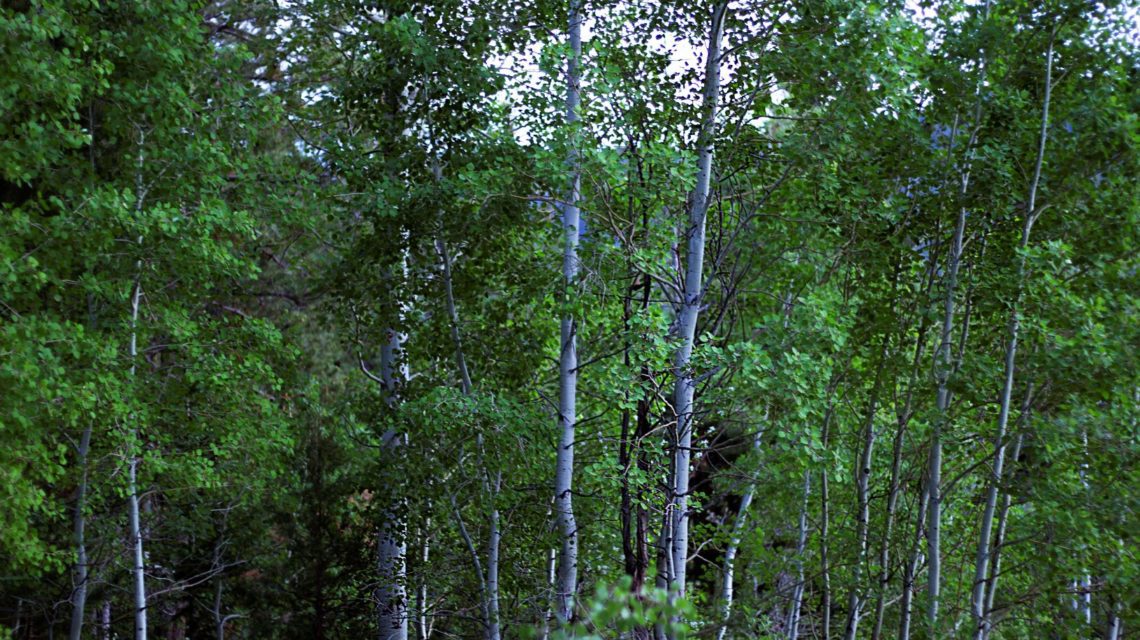Are your aspen trees struggling? Aspen trees are prone to many problems because of their soft bark. Use this guide to determine if your aspen tree has a common, treatable problem.
Skip to a section:
Leaves Turning Yellow Too Soon? Iron Chlorosis
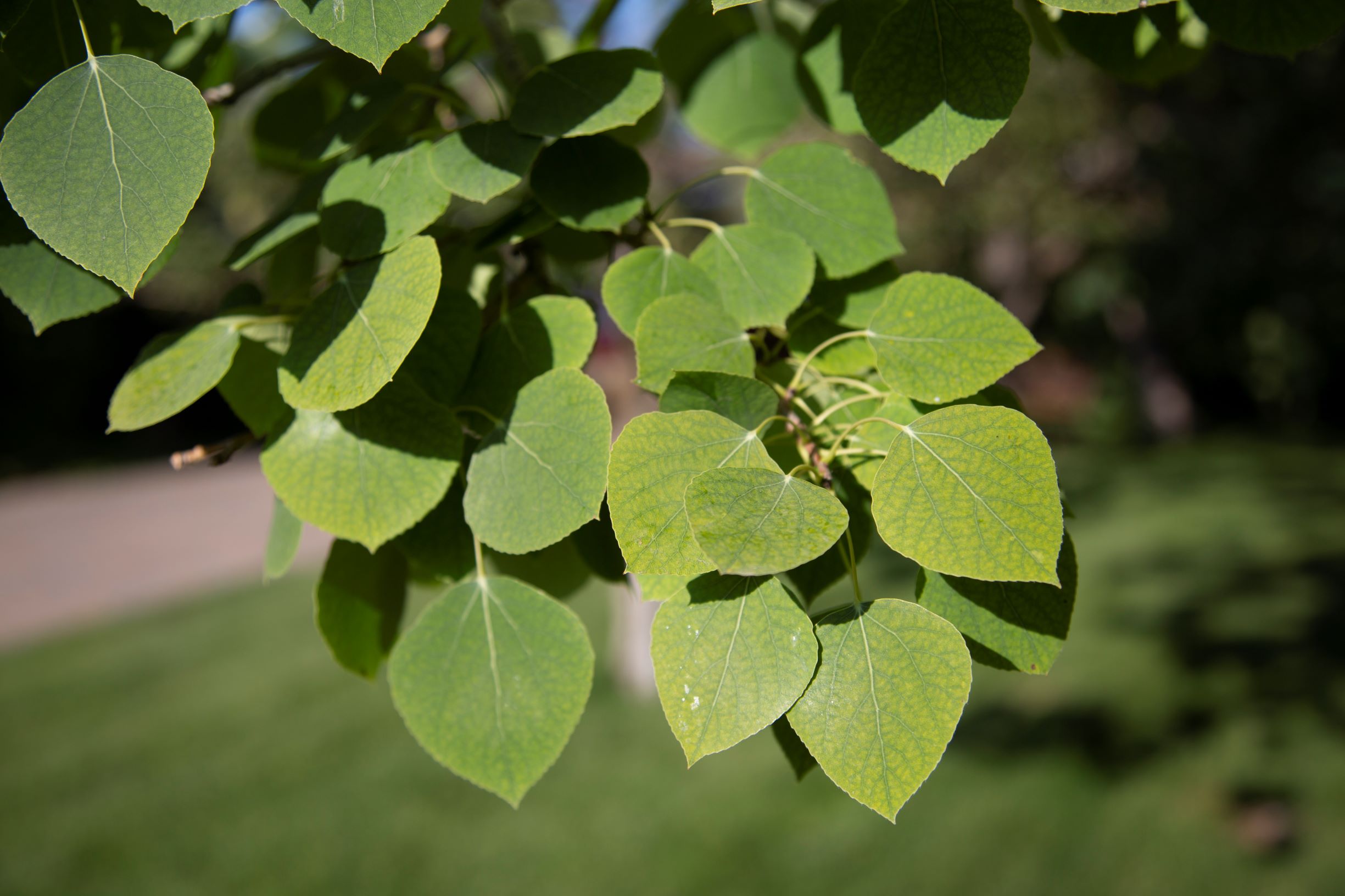

Are the leaves on your aspen tree starting to pale to a light green, revealing darker green veins? If so, your tree might be entering the early stages of iron chlorosis, a nutrient deficiency that develops when trees aren’t getting the iron they need from the soil.
In the summer (or in spring for severe cases), you’ll see the leaves begin to turn from light green to yellow. The yellow coloring usually starts at the edges of the leaves and moves toward the center of the leaves. Eventually, edges of the leaves may turn brown and curl inward. Leaves may also fall off your tree too early.
Sometimes insufficient watering can contribute to this problem. If your aspen tree is usually watered with your lawn, make sure you water the tree a little extra so the water can reach the tree’s root zone and not just to the lawn’s roots.
Most trees need professional help in order to heal from iron chlorosis:
- Chelated iron deep root injections into the soil around the tree are often effective
- Sometimes injections directly into the tree trunk are necessary
Stewart’s Tree Service professionals perform iron chlorosis treatments in spring and fall.
Sunscald (Southwest Winter Damage): Why Bark is Discolored and Cracking
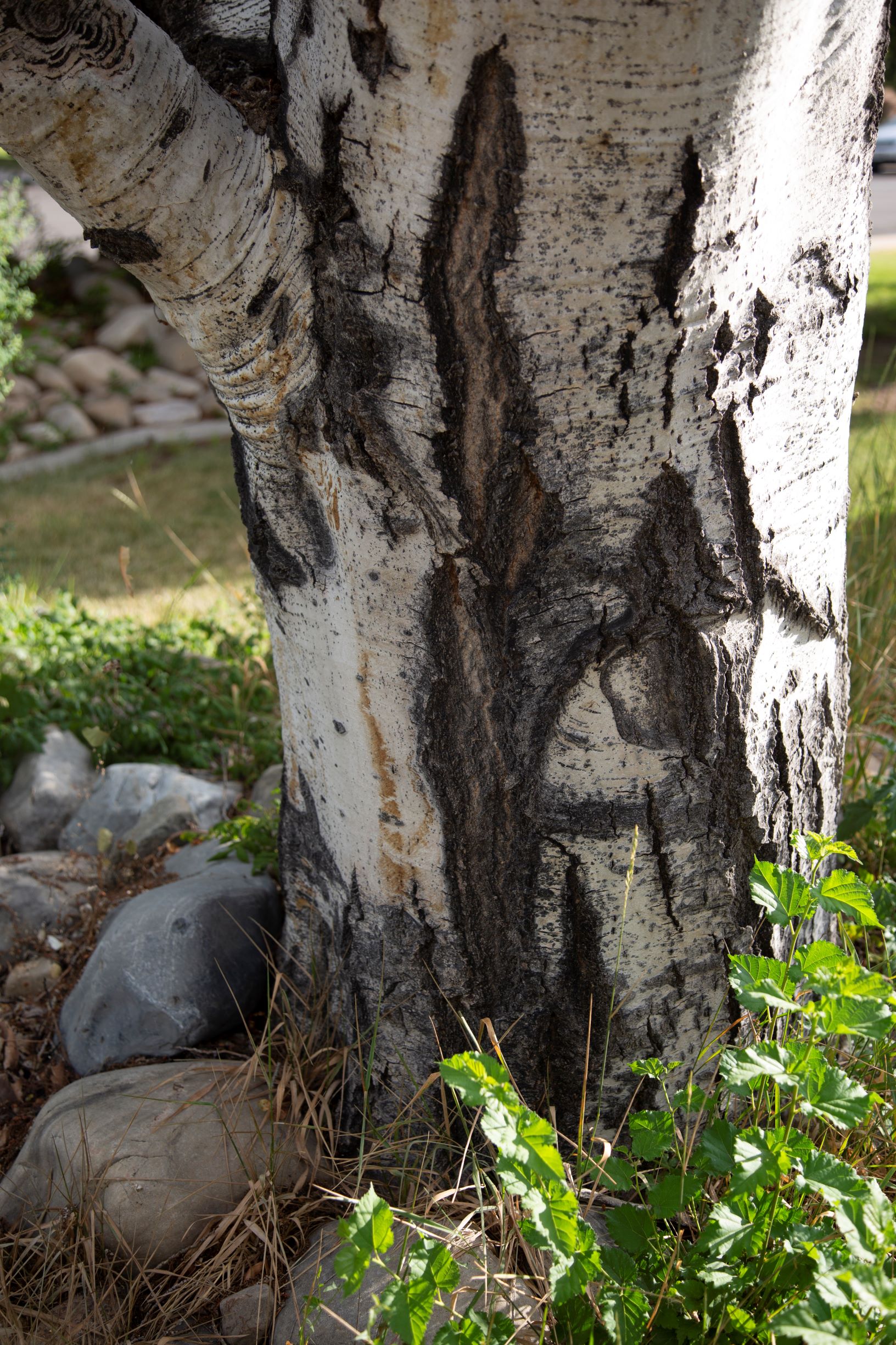

If your tree is suffering from sunscald, it will have discolored, cracked bark. Sometimes the tree bark on the surface will fall off or sink into the trunk because the layers beneath it are too damaged. This can prevent your tree from growing well.
This is a problem you may see in the early spring because sunscald damage happens when very cold weather is intermittently interrupted with sunny warm spells. During warm spells, the part of your tree that the sun hits will come out of its dormant state and prepare for spring. However, when the sun goes down and the temperature drops again, that part of the tree suffers some damage because it’s unprepared for the cold.
Sunscald is sometimes called southwest winter damage because the south/west-facing side of trees are exposed to the most sunlight and suffer from it the most.
To help prevent sunscald on your aspen trees, try the following:
- Paint the trunk with white latex paint to deflect the light away
- Make sure your trees are well watered because drought-stressed trees are more likely to suffer from sunscald
If your tree has already been damaged by sunscald, avoid putting paint or tar on it because it can prevent the tree from healing.
Check out our video for more information:
Brown Spots on Leaves? Aspen Leaf Spot & Rust Diseases
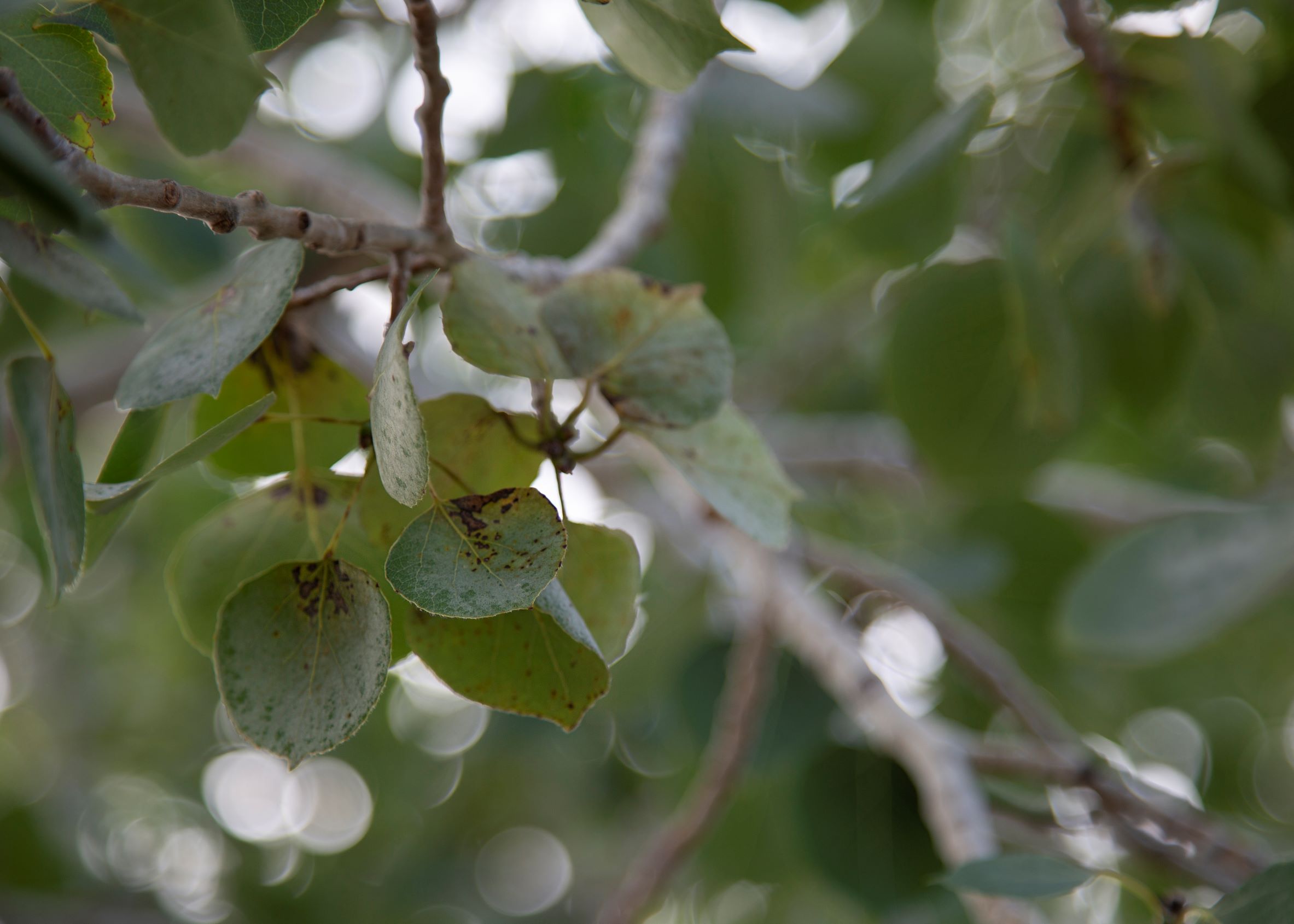

Aspen Leaf Spot causes brown and yellow spots on leaves, often causing them to fall off of the tree prematurely. You’ll start to see leaf spot showing on your tree’s leaves around July; the leaves will usually fall off soon thereafter. The fungus that causes leaf spot thrives in wet spring conditions and spreads through spores from old leaves.
To prevent long-lasting damage from repeated years of infection, water and fertilize your tree properly. This will make your tree heartier and better able to combat infections. Fungicides can also be an effective treatment for this disease. Stewart’s Tree Service sprays for aspen leaf spot disease in April and May.
Unnatural Growths on Your Tree: Cytospora Canker
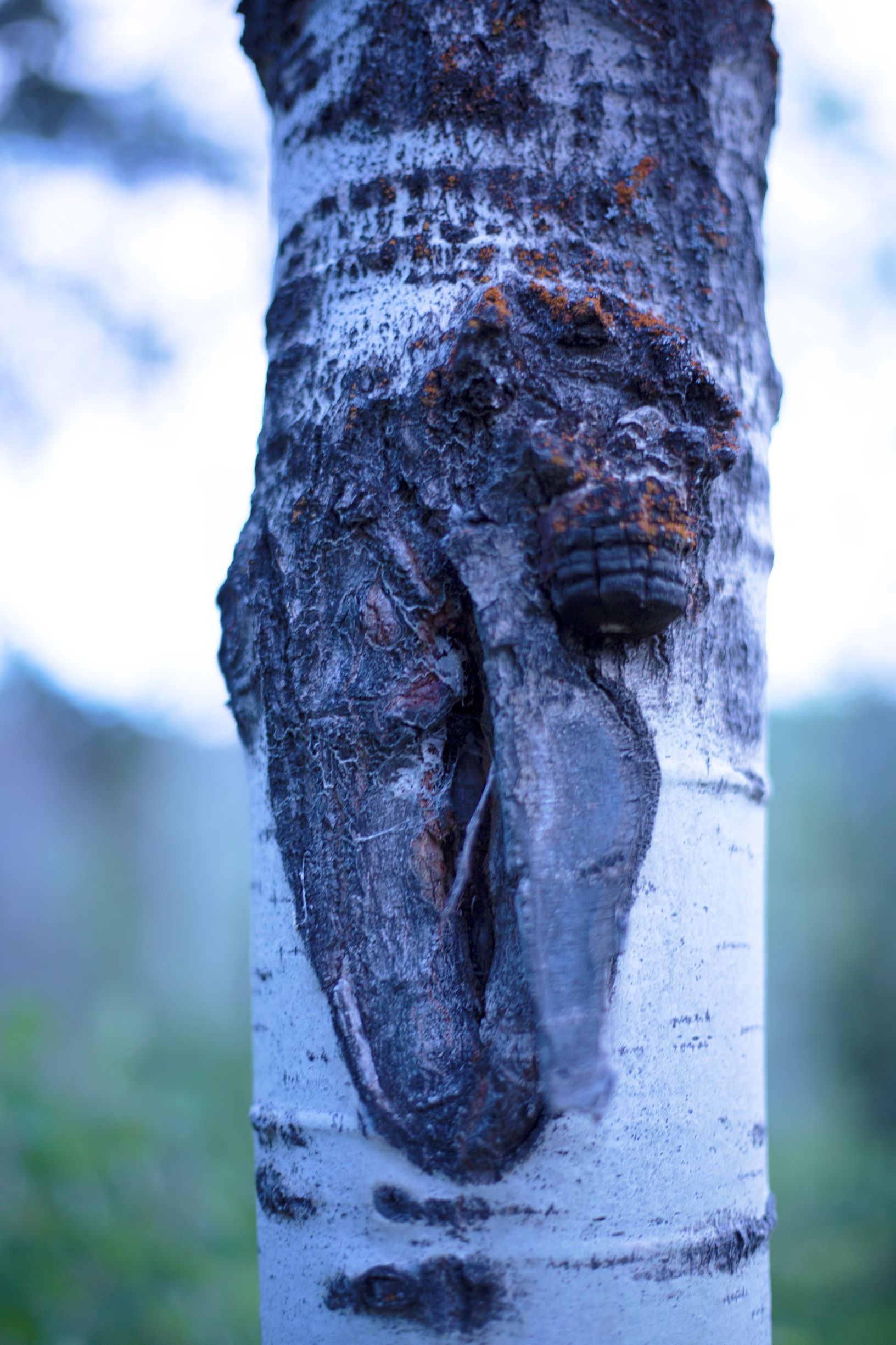

If your tree has the cytospora canker fungus, you’ll see small bumpy lesions on the bark of the tree. The bumps may be black, white, or brownish gray. The bark of an infected tree quickly dies—turning from orange to brown/black and oozing dark brown liquid. If the canker grows around the trunk, the tree will die.
Cytospora usually affects aspen trees damaged by lawnmowers, machines, insects, improper pruning, sunscald, etc.: It usually enters the tree through wounds on the bark. It can also infect healthy bark; however, if your tree is suffering from drought conditions, insect infestations, and other problems, it’s much more likely to become infected with cytospora.
The bad news is trees that become infected with cytospora usually die soon thereafter—especially if they have other problems. Cytospora also can’t be treated with chemicals, so the best way to control this fungus is to prevent infections:
- Prevent injury to the tree bark
- Prune infected branches
- Prevent pests that weaken the tree from feeding on it
Gray Film on Leaves: Powdery Mildew
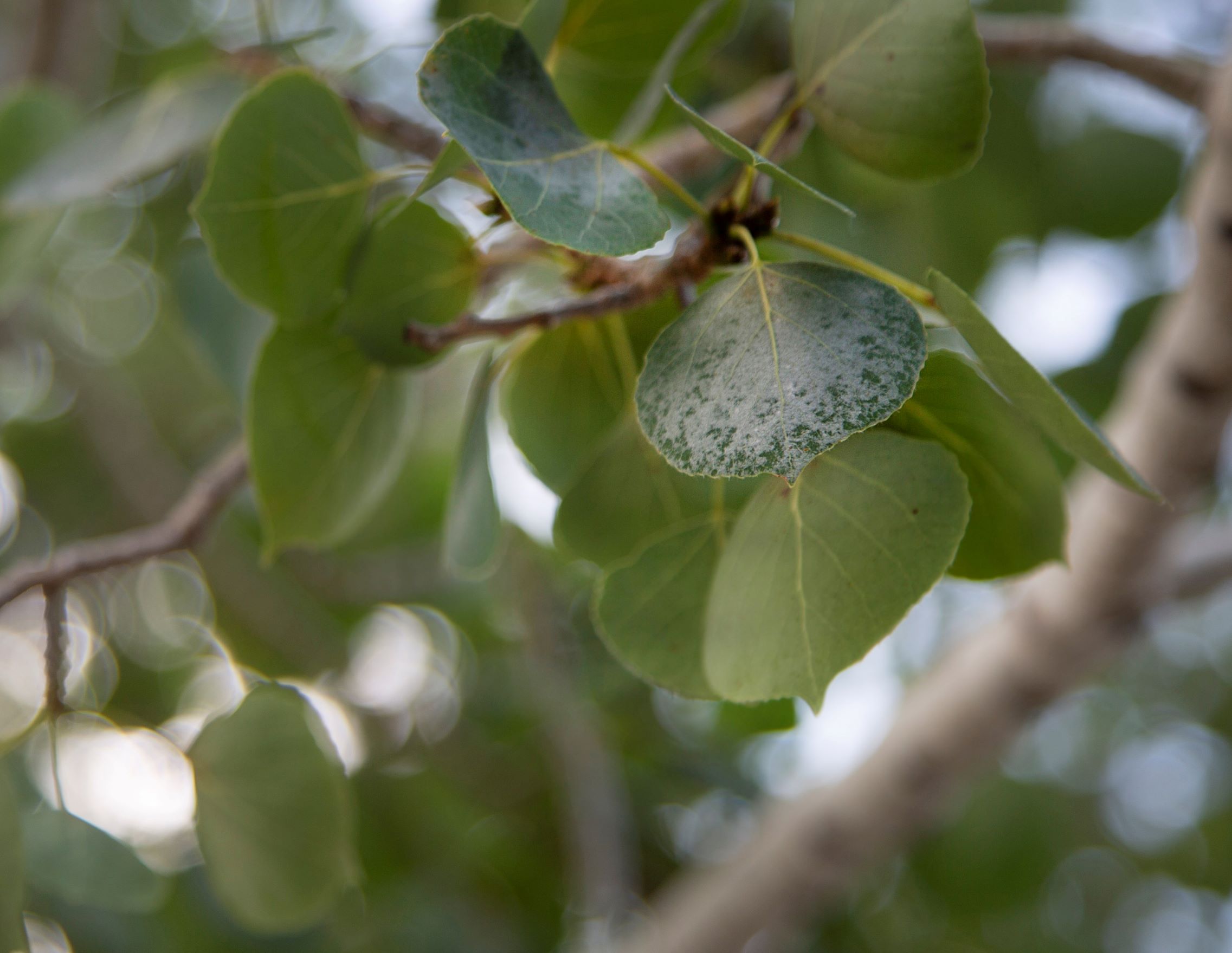

If you see a grayish-white film on your aspen tree’s leaves, it’s probably powdery mildew. Powdery mildew is a fungus that thrives in cool, wet conditions. The fungus does minimal damage to aspen trees, but it is unsightly. Treatment of powdery mildew is difficult; prevention is more effective:
- Spray with a preventative fungicide
- Trim back dense foliage to allow better airflow
Holes in the Trunk: Aspen Borer
If you’re seeing dime-sized holes in the trunk of the tree, your aspen likely has a borer bug problem.
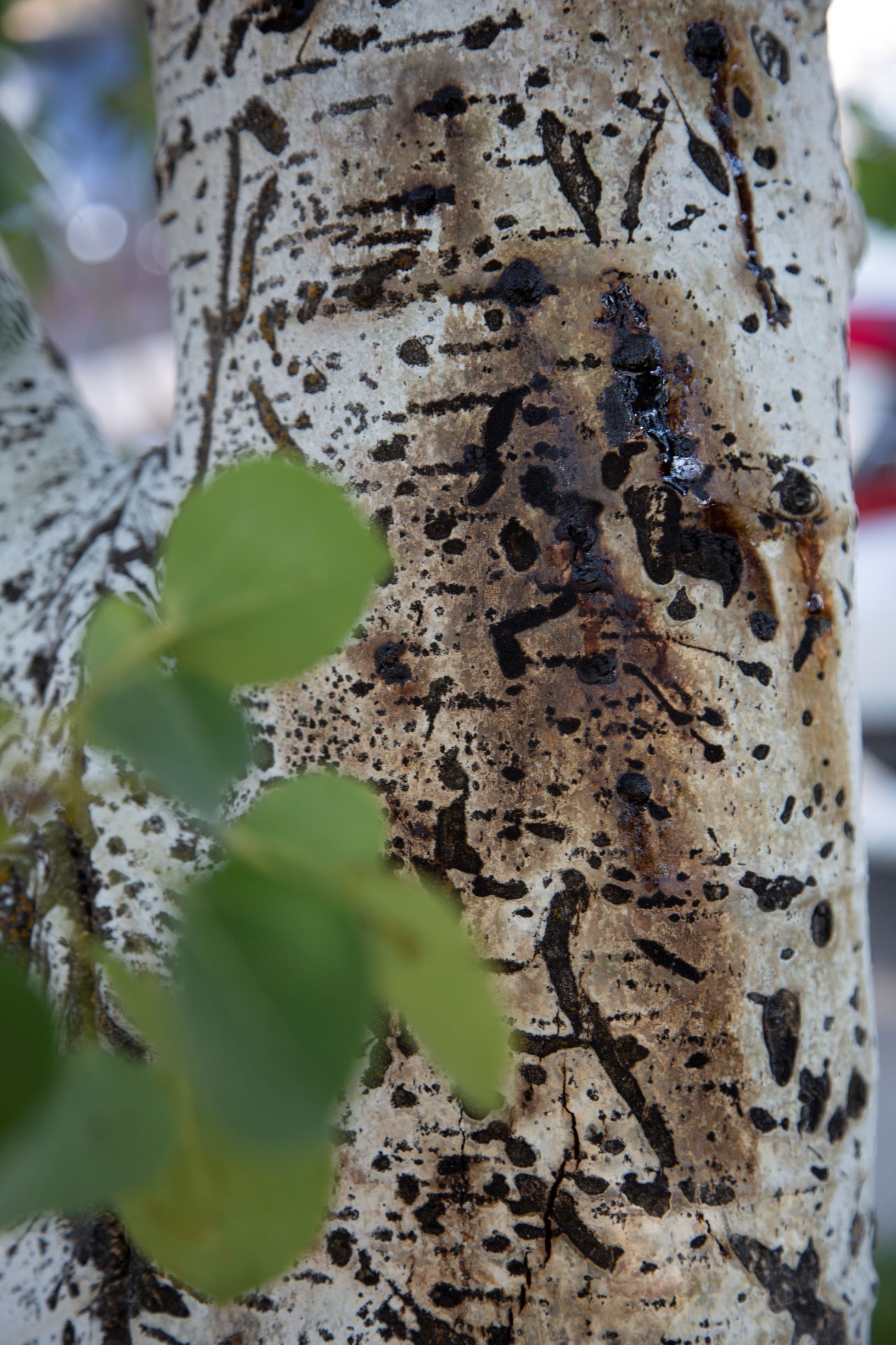

You may see frass (tree shavings and insect excrement) around the holes and at the base of the trunk, and the holes may ooze sap.
Your aspen tree can be attacked by more than 30 different types of borer bugs. Most types of borers lay their eggs in the bark of the tree. After hatching, larvae bore deep into the tree and feed on the inner wood layers for a year until they emerge as adult borers the next summer.
Borers usually only attack vulnerable trees and can cause major damage (that may result in death) to trees weakened by other problems.
Aspen borers are difficult to kill once they bore deep into the tree. The best way to protect your tree from being damaged by borers is to treat for them yearly:
- Have Stewart’s professionally trained tree specialists treat for borers
- Try to keep your tree as healthy as possible to prevent other problems that can weaken the tree
- Prune off dead branches
Scale-like Bugs on Branches: Oyster Shell Scale
Oyster shell scale bugs feed on the sap of tree branches and leaves. Large numbers of them can completely cover branches, causing parts of the tree to die off. Scale bugs form hard shells around themselves that protect them from predators and insecticides, so the best time to get rid of them is usually in their young, crawler stage. Stewart’s tree specialists can help explain possible treatment options.
Are you having problems with your trees? Stewart’s Tree Service can help! Call or text 801-226-2261 to talk with a specialist and get a free quote today.



